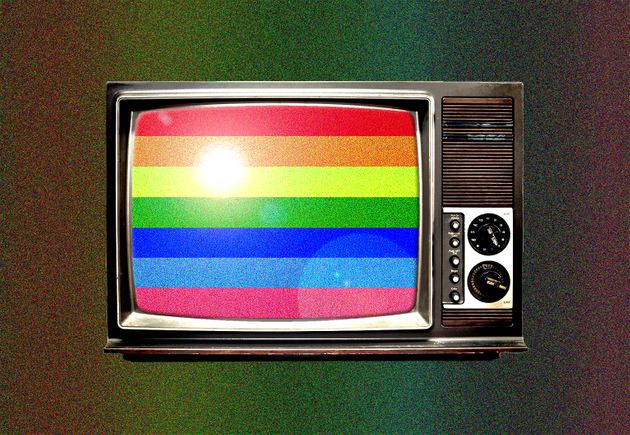I think I will always remember the first time I went to a press shop to buy a queer magazine.
I was in my early twenties, starting to come out publicly about my homosexuality. I entered in the shop, strolled the shelves with a beating heart and, amongst some graphic periodicals, I found what I was looking for: Têtu, the French gay magazine.
I grabbed it and walked towards the counter, trying to act as casually as I could even if internally I was boiling with a mix of excitement and fear.
As I was coming out of the shop, I felt very proud of myself for many different reasons. I felt that buying this magazine was like making a powerful statement. I, too, belong to this community of marginalised people. Buying Têtu, and then becoming a subscriber, was my first big step in joining the community, long before I would venture to a gay bar on a regular basis or register as a member of a rainbow association.
This magazine was the first item I owned that advertised my belonging to the LGBTQI+ community. And I made it one of my first militant acts to display it publicly, reading it on board a train, for example.
At that time, in the early 2000s, the internet was still in its infancy. There were no social media nor dating apps. The queer periodicals were still the main tool to connect the members of the LGBTQI+ community, to create a feeling of belonging and to offer information and education on queer topics. All the roles that queer periodicals had been playing for more than a century.
The first queer periodicals
The first queer periodical appeared in Berlin, Germany in 1896, at the dawn of what might be called the first homosexual movement.
This monthly magazine was called Der Eigene and did not clearly state its purpose in the fear of being censored. It talked about masculinity in general, with artistic pictures of handsome men and, after a few issues, it started to publish fictions with homosexual characters.
As the publication went on, it inspired others to launch queer periodicals throughout Europe.
The monthly issued Akademos appeared in Paris, France, in January 1909.
Failing to find a stable economic model for its development, as securing advertisers in this new kind of periodical was proving difficult, this first French gay periodical disappeared in December 1909 after releasing only 12 issues.
Financial difficulties were not the only issue that the first queer periodicals faced. Censorship was eager to strike anytime.
The second French gay periodical – founded in 1924 and called Inversions – changed its name into L’Amitié a few months after it was first issued in order to try and avoid a trial for violation of morality. The trick did not work and two of the founders of Inversions were sentenced to three months in jail in 1927.
Censorship also put an end to the first ever queer periodical published in the United States – Friendship and Freedom . This periodical was the official journal of the first LGBTQI+ association established in 1924 in the USA, the Society for Human Rights.
Henry Gerber, its founder, was an American soldier who had served in Germany during World War I and who had been eager to replicate in Chicago what he had discovered in Germany.
After only a few issues, Gerber’s home was raided by police. He was arrested, along with some of the other members of the Society while an article in the Chicago Examiner newspaper denounced them as practicing a child sex cult.
Gerber underwent three trials before the charges against him were dropped. In the meantime, he lost his job and used all of his savings for his defence.
Despite the court ruling requiring it, the police do not return the copies of Friendship and Freedom seized in his home nor his typewriter. Gerber dismantled the Society and left Chicago penniless.
The first American queer periodical and LGBTQI+ association had not lasted a year.
At the same time, in postwar Germany, the LGBTQI+ community was booming in Berlin – as evidenced by the publication of at least a dozen queer periodicals. Publications included Die Freundshaft, with its tens of thousands of weekly copies, and the first lesbian periodicals, Die Freundin (1924) and Frauenliebe (1926). This last one was also addressed to transvestite men.
If censorship was not as severe as in other parts of the world, it was not absent in the Weimar Republic. Die Freundin had to stop publication during a few months while Frauenliebe was renamed Garçonne to survive.
These periodicals were often produced by different LGBTQI+ associations and reached far beyond the big cities where they were produced. Letters from readers published in these periodicals showed how essential they were in creating a feeling of belonging, of normality, to thousands of
readers that could not take part in the thriving LGBTQI+ scene.
However, in the 1930s, the rise of fascism in Germany, the consequences of the financial crisis and then World War II put an end to the first LGBTQI+ movement.
All the queer periodicals that had appeared throughout Europe were disbanded or censured except one, Der Kreis , that had been created in Switzerland in 1932 and which continued publishing during the war.
A key instrument in the development of the modern LGBTQI+ movement
As soon as World War II was over, the LGBTQI+ movement was reborn in Europe and the United States thanks to the publication and distribution of queer periodicals.
The first one to reappear was a dutch periodical, Levensrecht , founded in 1940 – just a few months before the Nazis invaded the Netherlands – and whose publication resumed in September 1946.
The so-called homophile associations that were established in the 1950s all produced queer periodicals in order to reach a broader audience and increase their membership. These publications were essential as these organisations remained hidden.
Among these periodicals, we find ONE, Inc (1953), The Mattachine Review (1955) and The Ladder (1956) in the United States or Arcadie in France (1954).
These periodicals were mostly sold through subscription and were sent undercover.
Nevertheless, the American postal service decided in 1954 that the content of ONE, Inc was obscene and refused its distribution. This led to a legal action that reached the Supreme Court of the United States which ruled in 1958 in favour of the distribution of the periodical. This ruling provided a strong push forward in the development of the LGBTQI+ movement.
Since the 1980s, the diversification of queer media with the radio stations, TV channels and online content of all sorts (websites, Instagram accounts, podcasts, videos, etc.) has helped develop, structure and strengthen the LGBTQI+ community. However, printed periodicals like KET Magazine or Garçon pursue a century long tradition whose purpose has always been to create links between the members of the community, help building a feeling of inclusion and belonging, inform and educate, bring visibility to local people and projects, and promote the sharing of experiences.
It is our duty to support them as queer media have always been the backbone of the LGBTQI+ movement throughout its recent history.
Discover about the history of queer media in KET Talks podcast episode 1 available on Youtube, Spotify, IGTV and Deezer.
You may also like
-

Laetitia BICA : If there’s nothing at stake, why play?
Driven by her Sicilian roots and passion for photography, Laetitia BICA challenges industry norms through
-

LGA-Europe’s Equality Fundraiser Gala in Brussels
On July 4th, ILGA-Europe hosted their Equality Fundraiser 2024 in the Brussels Region, drawing around
-

Guggenheim Bilbao: A Beacon Of Inclusion With Queer Destinations Certification
The Guggenheim Museum Bilbao is breaking new ground as the first international museum to receive
-

Grindr Used to Trick Gay Men in Western Brussels
A Surge of Homophobic Ambushes Source: Le Soir In the latter half of June, western
-

A Celebration of Courage: Chille Deman Receives Citizen Medal from the City of Brussels
In a heartwarming ceremony held on May 17th, the International Day Against Homophobia, the City
